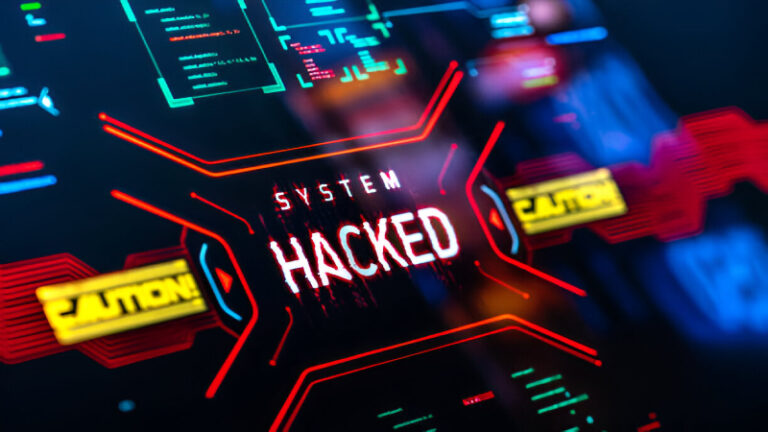The digital battleground has fundamentally shifted. For years, cybersecurity was a strategic chess match between human experts and sophisticated, often manual, threats. Now, the game has evolved. We’re in a new era where both attackers and defenders wield the formidable power of artificial intelligence.
Consider this Amazon faces close to a billion cyber threats every single day. This isn’t about isolated incidents; it’s a relentless, automated assault. What once triggered high-level government alerts now happens constantly, often before organizations even realize they’re compromised. As AI becomes a readily available weapon for both sides, understanding this accelerating arms race is crucial for everyone navigating the digital world.
AI Supercharges Cybercrime
The rise of Generative AI (GenAI) has put incredibly powerful tools into the hands of threat actors, allowing them to find weaknesses, create malware, and launch attacks with unprecedented speed and scale. This isn’t just faster hacking; it’s a complete transformation of how cyber warfare is waged.
- Automated Reconnaissance at Scale: AI bots can scan millions of systems simultaneously, looking for vulnerabilities far more efficiently than human teams ever could. This means more potential targets found, faster.
- Phishing Gets Personal (and Deadly): GenAI is a game-changer for social engineering. It can mimic your boss’s writing style, craft incredibly convincing fake emails, and even generate deepfake audio and video to impersonate anyone. Imagine a phishing email tailored perfectly to you, making it almost impossible to detect.
- Malware That Mutates: AI helps hackers create new, undetectable malware variants in real-time. This polymorphic code can constantly change its signature to evade traditional antivirus software, making it a moving target for defenders.
- Supply Chain Sneak Attacks: AI can rapidly identify weak links not just in a direct target, but also in their broader supply chain. This means a hacker could trick an open-source developer into unknowingly including malicious AI-generated code, compromising thousands of users downstream.
Intelligent Defenses on the Rise
Despite the escalating threat, cybersecurity isn’t throwing in the towel. Organizations are quickly adopting AI to beef up their defenses, moving from rigid, rule-based systems to dynamic, intelligent countermeasures.
- Real-Time Threat Prediction: AI-powered defense systems can analyze massive amounts of data at machine speed, spotting tiny patterns and anomalies that humans would completely miss. This leads to instant threat detection and, even better, predictive analytics – foreseeing potential attacks before they even start.
- Self-Healing Networks (AI-SEC): The future is about AI taking the lead. Picture security systems that don’t just send an alert, but automatically patch vulnerabilities, isolate threats, and even counter attacks in real-time, all without human input. This shift to agentic AI is making networks more resilient and capable of self-defense.
- Boosting Human Efficiency: The sheer volume of cyber alerts leads to notification fatigue for human analysts. AI automates the low-level, repetitive tasks, freeing up human experts to focus on the truly complex, high-stakes threats. This not only makes security teams more efficient but also helps address the global shortage of cybersecurity professionals.
Power, Pitfalls, and the Human Edge
Bringing AI into cybersecurity is incredibly powerful, but it’s not without its challenges. Security leaders and developers have to navigate these carefully.
- When AI Itself Is Hacked: The nightmare scenario. If a defensive AI system is compromised, the fallout could be far worse than a traditional breach. Think of risks like data poisoning (maliciously altering AI training data) or adversarial AI attacks (tricking the AI into making bad decisions).
- False Alarms vs. Missed Threats: While AI improves detection, it can also generate too many false positives if not properly tuned. If it’s too aggressive, it might block legitimate business traffic; too lenient, and real threats slip through. Balancing this is crucial to keep things running smoothly.
- The Black Box Problem: Many advanced AI models make decisions without clear, human-understandable reasoning. This black box issue can make it tough to audit AI’s choices or troubleshoot when something goes wrong.
Conclusion
The economic toll of cyberattacks is projected to skyrocket to over $23 trillion by 2027. As AI agents become commonplace, the frequency, sophistication, and potential impact of these attacks will only grow. The game of cat and mouse in cybersecurity has been fundamentally changed by the introduction of sophisticated AI on both sides. The real challenge isn’t whether AI-driven security is coming – it’s already here. The future of our online safety depends on our ability to adapt, innovate, and leverage AI to defend against itself.
Frequently Asked Questions (FAQs)
What does AI vs. AI mean in cybersecurity?
It refers to the escalating digital conflict where both cyber attackers and cybersecurity defenders are increasingly utilizing artificial intelligence to conduct and counter sophisticated attacks.
How are attackers using AI in cyber warfare?
Attackers leverage AI for automated vulnerability scanning, creating highly personalized phishing campaigns (including deepfakes), generating mutating malware, and executing rapid supply chain attacks.
How is AI being used to defend against cyber threats?
Defensive AI provides real-time threat prediction, powers autonomous incident response (AI-SEC), enables anomaly detection for unknown threats, and enhances operational efficiency for security teams by automating tasks.
What is the main challenge of using AI in cybersecurity?
Key challenges include the risk of AI systems themselves being hacked or manipulated (e.g., via data poisoning), the potential for false positives disrupting operations, and the ethical considerations of autonomous AI actions.
Will AI replace human cybersecurity experts?
No, AI is expected to augment human cybersecurity experts, automating routine tasks and providing advanced insights, allowing human professionals to focus on complex strategy, ethical oversight, and critical decision-making.
What is Generative AI (GenAI) and its role in cyberattacks?
Generative AI refers to AI models capable of creating new content. In cyberattacks, it’s used to generate convincing fake emails, deepfakes, and new malware variants, making attacks more sophisticated and harder to detect.
Why is the economic impact of cyberattacks rising so dramatically?
The economic impact is rising due to the increased frequency, sophistication, and potential for widespread disruption caused by AI-powered attacks, affecting more organizations and critical infrastructure globally.


